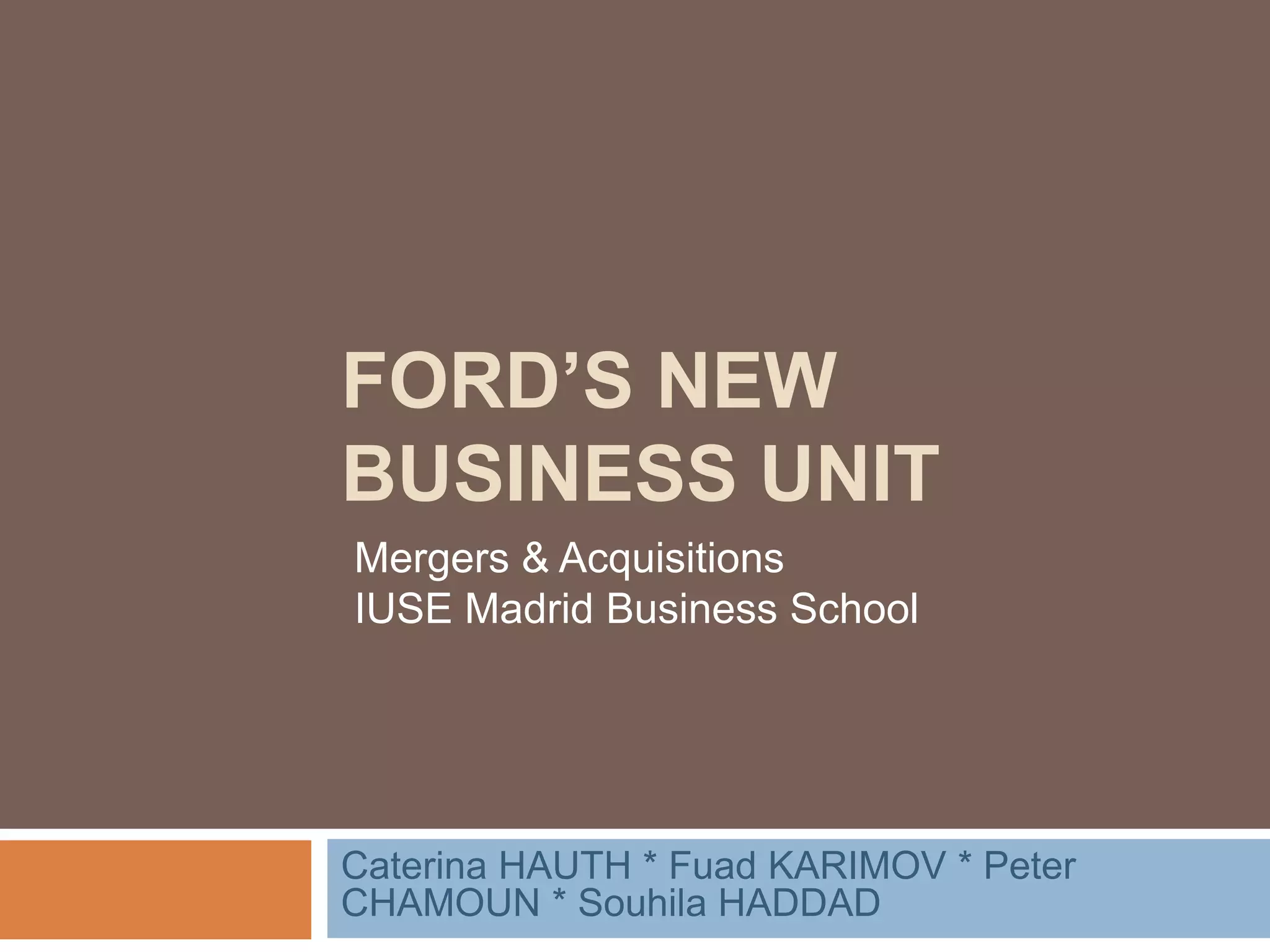Ford is considering starting a new business unit focused on electric vehicles. They analyzed the electric vehicle industry and various company targets. Based on their analysis of companies like Tesla, Wheego, Fisker and Tango, Ford believes their best options are either starting a joint venture with Tesla, the current market leader, or acquiring Wheego to gain expertise in affordable electric vehicles and leverage Ford's global distribution.




























